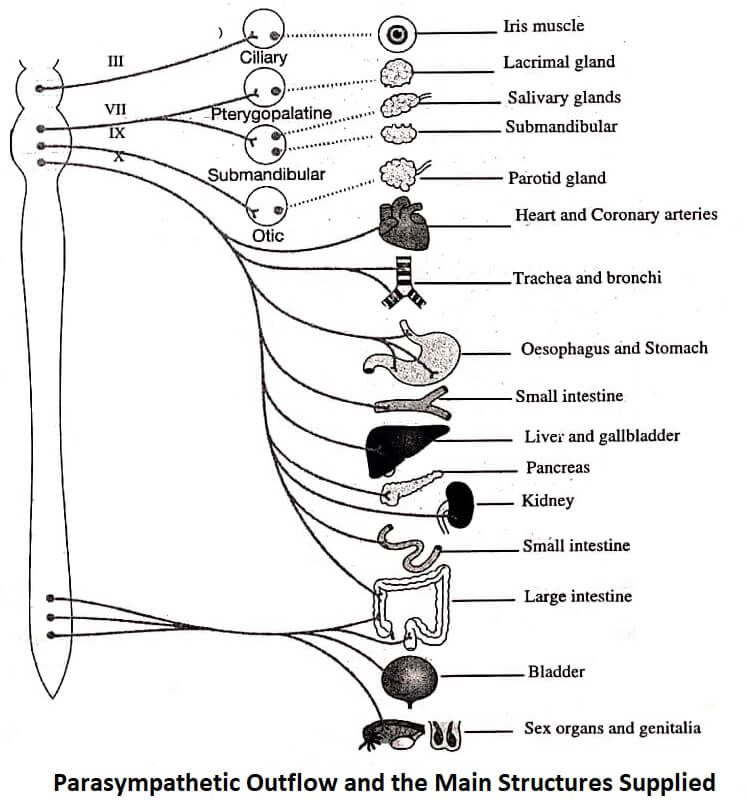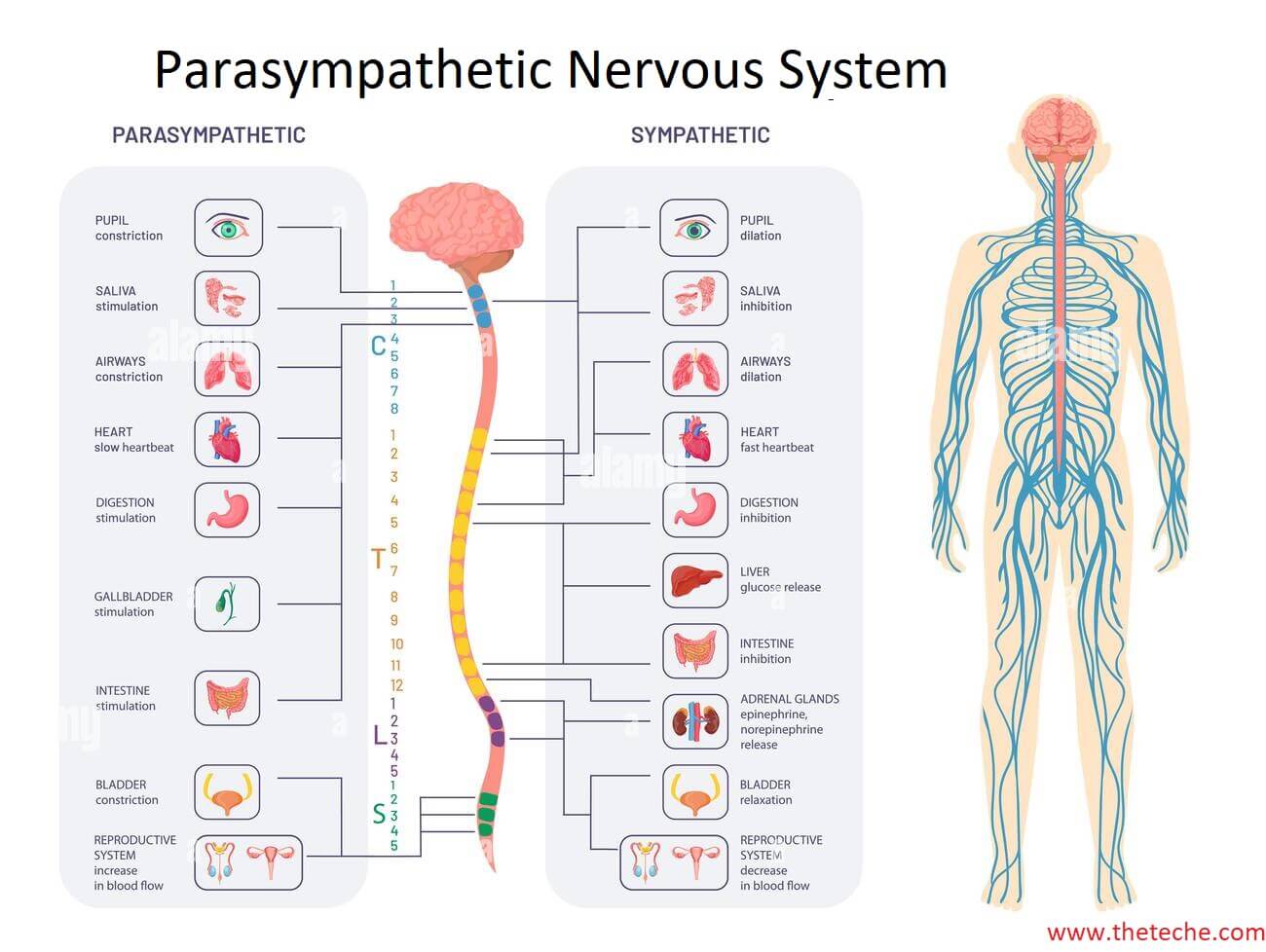The preganglionic fibres of the parasympathetic nervous system arise from the cell bodies of the CNS. The preganglionic fibres originate from the nuclei of the third, seventh, ninth and tenth cranial nerves (CN III, VII, IX, and X), and, the fourth sacral segments (S2 to S4) of the spinal cord.

The parasympathetic nervous system has three parts:
Preganglionic Parasympathetic Fibres : These fibres are neuronal axons. These long sized fibres are present in the midbrain, brain stem, and lateral funiculus of the sacral part of the spinal cord. They form the cranio-sacral outflow as they come out either through some of the cranial nerves such as Oculomotor (III), facial (VII), glossopharyngeal (IX) and Vagus (X) or through the 2nd ,3rd and 4th sacral spinal nerves. They synapse with neurons of the parasympathetic ganglia.
Parasympathetic Ganglia : These are either located inside the visceral organs, or close to them. Every ganglion is made up of a mass of neurons. The parasympathetic ganglia do not interlink to form a chain.
Postganglionic Parasympathetic Fibres : These fibres are neuronal axons. These small-sized neurons supply the smooth muscles and glands of the visceral organs. Auerbach plexus is a network formed by these fibres in the walls of visceral organs.
Acetylcholine is secreted by the nerve endings of these fibres therefore these are known as cholinergic nerve fibres. The parasympathetic nervous system is involved in energy conservation and is responsible for the feeling of comfort, relaxation, pleasure etc. at the time of rest.
| Read More Topics |
| Sympathetic nervous system |
| Factors affecting drug receptor interaction |
| Plasma protein binding of drug |






